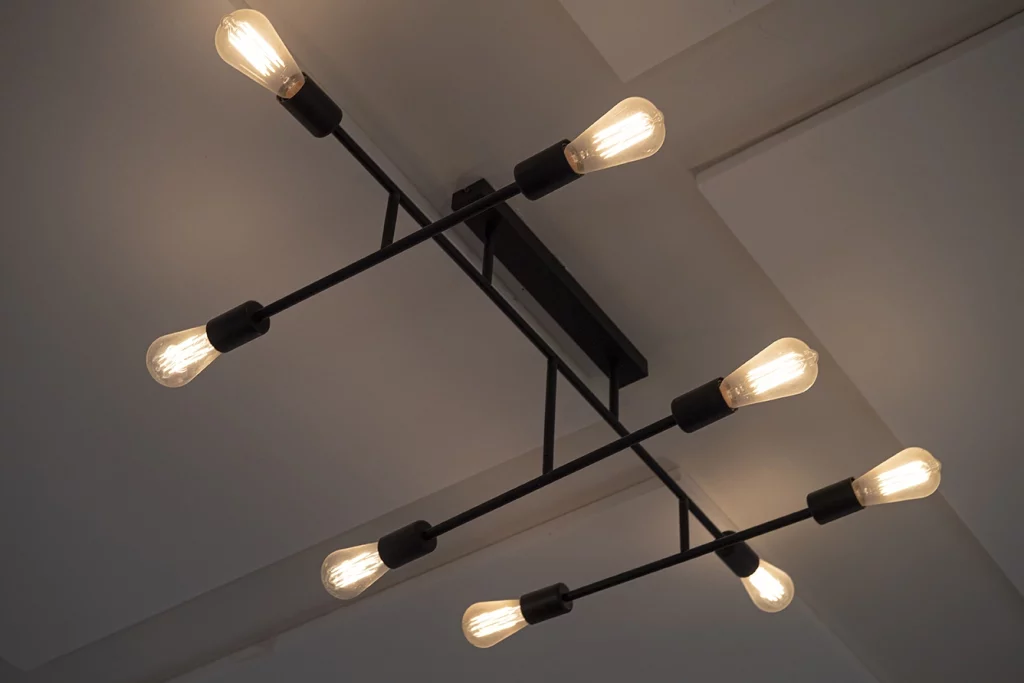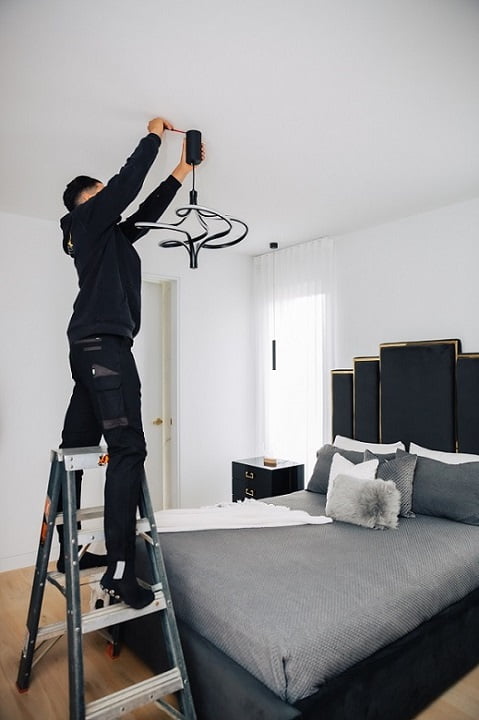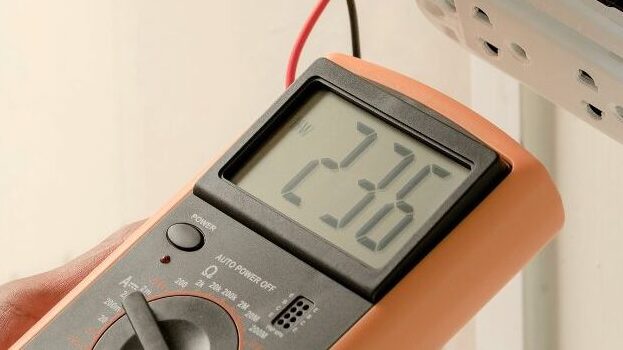Identify and Resolve the Issues Behind Your LED Light’s Sudden Dimming
Immediate Action Required:
If your LED light has dimmed unexpectedly, it’s often the result of a voltage drop, circuit overload, excess heat, poor wiring connections, or potentially using subpar LED bulbs. Continue reading for comprehensive steps to effectively address and rectify this lighting problem.
Discover the Top 5 Reasons Why Your LED Lights Are Dimming, Along with Effective Solutions
LED lights are renowned for their impressive lifespan, often marketed as lasting for many years. However, some may fail to operate effectively even after a short duration. Whether dealing with downlights in your kitchen, decorative outdoor lighting, or festive Christmas LED lights, experiencing unexpected dimming can be both perplexing and frustrating. This extensive guide delves into the primary factors contributing to LED dimming and offers safe, effective troubleshooting methods to restore your lighting to its optimal brightness.

1. Understanding How Voltage Drops Lead to Unanticipated LED Dimming
The leading cause of LED lights dimming unexpectedly is a voltage drop. When the voltage supplied to the light fixture dips below the necessary level for the LED, its brightness can diminish significantly. But what causes these voltage drops? Here are some common culprits:
- Temporary fluctuations in the power grid
- Overloaded local circuits
- Long distances of wiring using inadequate gauge cables
- Faulty switchboards or insufficient connections
Voltage drops can present considerable challenges, particularly for budget LED lights that may not have effective voltage regulation and are more sensitive to slight voltage changes. To ensure optimal performance, always consider upgrading to higher-quality products.
Also Read: 10 Effective Ways to Reduce Power and Energy Costs
2. Identifying Overloaded Circuits in Older Residential Properties
Overloading electrical circuits by connecting too many devices can place significant stress on your power supply. When a circuit struggles to meet demand, the voltage distribution among devices becomes uneven, resulting in dimming lights, particularly for sensitive LEDs. This issue is especially prevalent in older homes that were built before modern energy-efficient technologies were adopted. Overloaded circuits typically exhibit:
- Flickering lights
- Buzzing sounds from switches
- Dimmed lights, particularly in inexpensive LED bulbs lacking essential protective features.
Request a Quote and Inquire About Our FREE Electrical Inspections
3. How to Troubleshoot Loose Connections and Damaged Wiring
Inadequate power delivery can be caused by loose connections or aging wiring. If your light flickers or dims when you adjust a switch or device, it could signal a loose connection. Here are essential areas to inspect:
- Ensure the bulb is securely installed
- Check for flickering at the wall switch
- Look for burn marks, discoloration, or any unusual buzzing sounds
Important Note: Many low-cost LED lights utilize thin or low-quality internal wiring, making them more susceptible to failure due to heat or movement. Conducting regular inspections and maintenance can help prevent unexpected electrical issues.
Also Read: Ensuring Your Pets’ Safety Around Electrical Installations
4. Understanding the Dangers of Overheating in LED Fixtures
While LEDs generate less heat compared to traditional incandescent bulbs, they still require efficient heat dissipation to function properly. If an LED overheats, it will automatically dim as a protective measure. Overheating can be caused by various factors:
- Enclosed light fixtures that restrict airflow
- Defective heat sinks, particularly in budget-friendly models
- Excessively high surrounding temperatures
- Insufficient air circulation around the fixture
If your LED housing feels hot to the touch, it likely suffers from overheating. This problem is especially common with cheap, poorly ventilated LED downlights or outdoor lights installed in direct sunlight without adequate thermal protection.

5. How Lumen Depreciation Leads to Gradual Dimming of LED Lights
Even high-quality LED lights will experience gradual brightness loss over time, a process known as lumen depreciation. Quality LEDs can maintain around 70% to 90% of their brightness after approximately 50,000 hours of usage. Conversely, cheap LED products may begin to fade after only 5,000 to 10,000 hours, often fading unevenly. Consider the following scenarios if your light appears to be:
- A budget model nearing its life expectancy.
- Several years old and heavily utilized.
- Frequently used.
What Causes Budget LED Lights to Fail Prematurely?
During the holiday season, inexpensive LED lights inundate the market, available in various forms such as string lights, downlights, garden decorations, and more. The potential risks associated with these products include:
- Inconsistent voltage tolerance: leading to dimming and flickering issues
- Poor heat management: increasing the likelihood of overheating
- Low-quality drivers: which fail to effectively regulate electrical current
- Lack of weatherproofing: making them unsuitable for outdoor usage
Holiday Purchasing Tip: When selecting LED Christmas lights, look for products that feature:
- IP65+ waterproof rating
- Compliance certification marks (e.g., RCM)
- Reputable brands (avoid lesser-known budget brands)
While choosing cheaper lights may save you money upfront, it can lead to higher costs in terms of replacements, safety, and long-term frustration.
Effective Solutions for Fixing Dim LED Lights
Check for Loose Connections and Indications of Overheating
Begin by thoroughly inspecting your light fixture. Is the bulb securely fastened? Are there visible signs of fraying, corrosion, or any damage? If you notice anything unusual, do not attempt to repair it yourself, particularly if wires are exposed or if the fixture appears burnt or melted. Carefully touch the fixture; if it feels excessively hot—think “it-could-cook-an-egg” hot—it is a significant warning sign. Overheating fixtures present serious risks and often necessitate replacement.
Need help? We are Beacon Lighting Recommended Electricians, and installing and replacing LED fittings is our area of expertise. Whether you’re located in Braybrook, Yarraville, or the surrounding areas, Electrx can address the issue safely and efficiently.
Use a Multimeter to Assess Voltage Levels
If your LED is dim due to insufficient voltage, utilizing a multimeter will help pinpoint the issue. Testing the voltage at your LED fixture will reveal whether your lights are receiving the necessary power supply. Compare the measured voltage with the recommended voltage for your specific LED lights. If the voltage is lower than required, this could explain the dimming. If the voltage consistently falls short, you may be facing a more significant electrical issue and should consult a qualified electrician for further evaluation.
If low voltage is detected across multiple fittings, it indicates a larger wiring or switchboard issue that needs to be addressed.

Review the Settings of the Dimmer Switch
We often receive inquiries like this:
“Why is my light dim?”
Us: “Do you have a dimmer switch?”
Them: “…oh.”
Ensure that no accidental adjustments have been made to the dimmer and check for compatibility issues with your specific LED model.
Test the Circuit by Turning Off Other Appliances
Consider turning off other devices connected to the same circuit as your LED lights. If your lights brighten, you are likely experiencing an overloaded circuit. Implement the following strategies:
- Redistribute devices across different circuits to balance the load
- Upgrade your switchboard for enhanced performance
- Replace budget LEDs with more efficient models
Also Read: Electrical Upgrades For Your Office
Replace the LED Bulb If Necessary
If none of these solutions address the issue, your LED may simply be nearing the end of its lifespan. Test this by swapping it out with another LED bulb from your home. If the new bulb restores full brightness, the old bulb was likely due for replacement. In this case, proceed to acquire a new LED bulb. However, if changing bulbs does not resolve the issue, the root cause likely lies elsewhere.
Key Insights on LED Dimming Problems
So, what caused your LED light to suddenly dim? The possible factors could include:
- Voltage drops impacting performance
- Loose connections disrupting power flow
- Heat accumulation affecting functionality
- Circuit overload due to excessive devices
- Or the LED bulb itself—especially if it is a budget model
With this guide, you are now armed with the knowledge of what to check—and how to resolve the situation.
However, if you are uncertain or observe any signs of damage, never compromise on electrical safety.
Let Electrx Provide Expert Assistance for Your LED Issues
We are licensed electricians and recognized installers for Beacon Lighting. Our comprehensive services include:
- Testing and replacement of LEDs to ensure safety standards
- Circuit diagnosis to identify and rectify issues
- Solutions for overload and overheating challenges
- Safe, durable electrical upgrades for your home
If you have any doubts or questions regarding electrical matters, it is always best to consult a professional electrician, such as Electrx Electricians. Reach out to us today for expert assistance.

Common Questions About LED Light Troubleshooting
Q: Why is my new LED bulb already dim?
A: This could be due to a voltage drop, faulty wiring, or a low-quality LED that lacks adequate voltage regulation. Consider replacing it with a high-quality LED to see if that resolves the issue.
Q: Do inexpensive LED lights dim more quickly?
A: Yes, indeed. Budget LEDs typically lack proper heat sinks and stable drivers, which result in premature lumen loss, flickering, and dimming—especially in hot or outdoor conditions.
Q: Why do my Christmas lights flicker and fade?
A: Seasonal LED string lights are often manufactured using lower-grade components. Environmental exposure, overuse, and power surges can all contribute to dimming. Always choose outdoor-rated, certified lighting to ensure durability and performance.
Q: Can I fix dimming LED lights by myself?
A: You can troubleshoot by checking connections, testing voltage levels, and replacing the bulb. However, if the issue persists—particularly across multiple fittings—contact a licensed electrician for professional assistance.
The Article: LED Light Dim? Discover the Reasons Behind It first appeared on https://writebuff.com
The Article LED Light Dim: Uncover the Causes of Dimming Issues Was Found On https://limitsofstrategy.com

